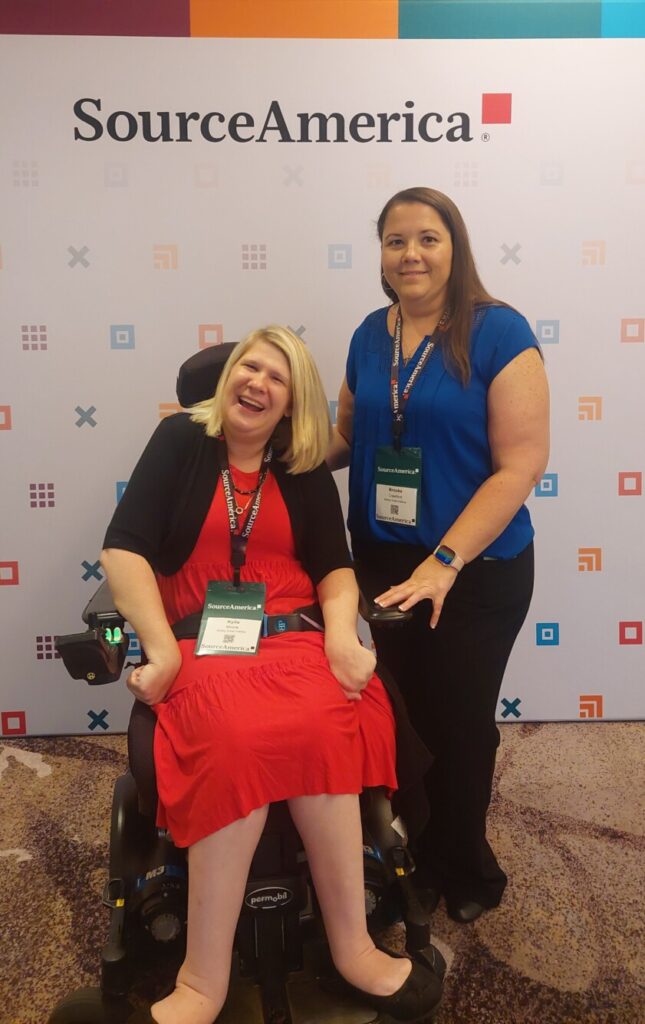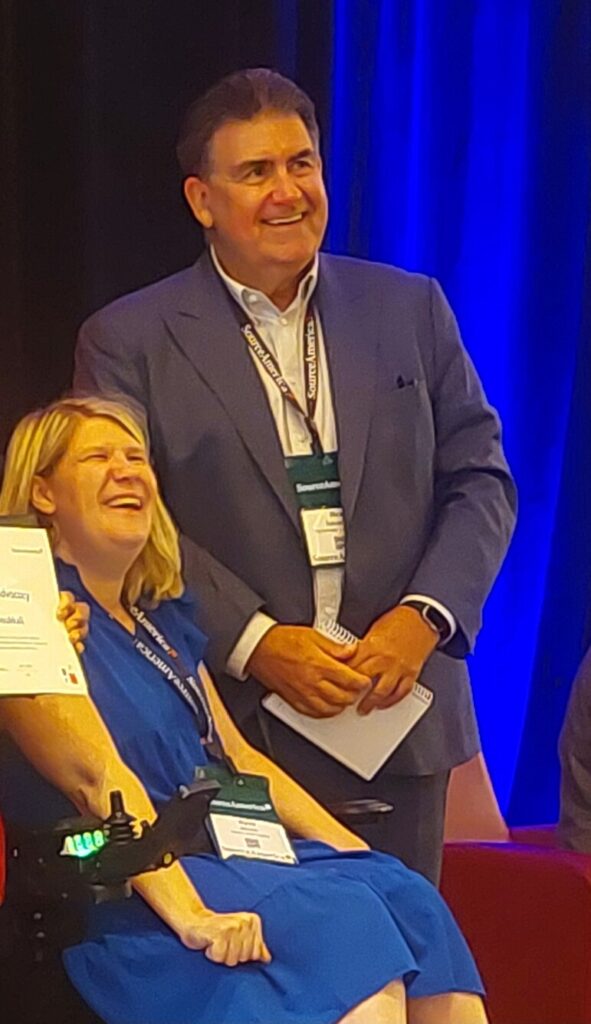To live independently, individuals with disabilities need access to the same opportunities as their non-disabled peers. These opportunities include but are not limited to physical, social, and economic freedom. An essential first step towards securing independence is finding meaningful employment and a career that aligns with the person’s skills and interests.
The unemployment rates among this population are staggering. According to the latest Bureau of Labor Statistics figures, almost 80 percent of those living with disabilities are unemployed. This trend affects even those with bachelor’s degrees or higher. In 2022, nearly 70 percent of them were unemployed. Some struggle to find suitable opportunities, while others accept pay reductions and put their career growth on hold to protect their much-needed benefits. Suppose a person with a disability earns above a certain income threshold. In that case, they risk losing their social security and Medicaid benefits, often essential for maintaining a good quality of life.
As a young woman living with Cerebral Palsy, I know firsthand that individuals with disabilities want gainful employment and the opportunity to be productive, independent citizens. I have been an advocate in the disability community for 12 years and have worked as the Special Projects Coordinator for the Bobby Dodd Institute (BDI) in Atlanta, Georgia, for over a decade. Like many others with disabilities, I find myself in a Catch-22 situation.
What is the Benefits Cliff?
Work incentives are available for Social Security beneficiaries who are working, with different incentive programs based on the type of benefit, whether Supplemental Security Income or Social Security Disability Insurance. Supplemental Security Income (SSI) is a monthly calculation, and earned income is deducted from their SSI award. Individuals receiving Social Security Disability Insurance (SSDI) have a trial work period, followed by an extended period of eligibility (EPE). During EPE, individuals earning more than $1,470 gross monthly have their benefits suspended. This suspension is because their income exceeds what is considered substantial gainful activity. Following EPE, individuals are subject to termination from benefits if they exceed the substantial gainful activity threshold. Further, Social Security beneficiaries who demonstrate they can earn at the substantial gainful activity level are subject to a continuing disability review. It may be determined that they are no longer eligible for benefits because they can work at a substantial gainful activity level.
Continued access to Medicaid is a work incentive for those individuals who have lost eligibility for Social Security Income because they exceeded substantial gainful activity limits. However, there are earning caps for Medicaid as well. Individuals cannot exceed $2,742 gross earnings monthly without losing Medicaid, which is essential for individuals who require services to live in a home and community setting. This creates a benefits cliff, which puts employees with disabilities in a very difficult situation and traps the individual in a cycle of poverty because regardless of their potential to earn, they must remain perpetually underemployed so that they may have the services they require to live. Adding insult to injury is the resource cap for Medicaid. An individual loses Medicaid (and may be placed in an overpayment situation with Social Security) if the individual’s total resources exceed $2,000 at any given time. While individuals can utilize ABLE accounts or Supplemental Needs Trusts as a safe haven for resources, this process is an additional barrier individuals must navigate to avoid the benefits cliff. As a result, individuals face limits in their ability to earn and save. These limits may force them to languish in a debilitating poverty cycle.
Thousands of people live in this situation, and I am one of them.
We will never become personally and financially independent if we don’t work. Employees with disabilities should have the right to work and earn significant wages without jeopardizing our Social Security and Medicaid benefits.
When we are younger, we are told that we can become personally and financially independent if we do all the “right things.” For most people, the “right things” include working hard in school, attending and graduating from a good college, and building a successful career. For the general population, if you do all these things, you should be able to be personally and financially independent. For people with disabilities, however, it does not work the same way. I can personally attest to this firsthand because I feel like I have done all the “right things.” Yet, I am still not where I want to be, personally or financially.
As a professional disability advocate, I have worked hard to build a career I love. I attended Reinhardt University and received a degree in psychology. I have created and am successfully building a career at BDI. I have also taken several advocacy training courses to gain more experience in my field.

My hard work paid off this year. Several disability advocacy organizations have invited me to do contract work for them. Along with my current job at BDI, another nonprofit, SourceAmerica, hired me to teach self-advocacy to students to prepare them to speak on Capitol Hill. A third organization, Arts InCommunity, hired me as their advisory board chair. All these companies want to pay me for my work, but my benefits would be affected if I accept the income. These government-enforced limits are incredibly frustrating; I should be rewarded financially for the quality of work that I do. As a result of these income cap limits, it is challenging to become a successful advocate and a financially independent person. Even though I am not financially independent, I do more things for myself daily to become as personally independent as possible.
Despite all the challenges the benefits cliff causes, I would still encourage people with disabilities to work as much as possible without losing their benefits. Laws need to be changed so that employees with disabilities can be productive citizens and earn wages that will allow them to become financially independent and keep their benefits.
Talking About the Benefits Cliff on a National Level
Over 28 million people in the United States live in a household that receives means-tested benefits. This means that each one of them may be affected by the “cliff effect” at one point or another. Since this topic resonates with many of us, I decided to bring national attention to the problem. And what better stage for that than the SourceAmerica Grassroots Advocacy Conference?

The SourceAmerica Grassroots Advocacy Conference is an incredible experience that changes people’s lives forever. In 2019, for the first time, my company, the Bobby Dodd Institute, selected me as their self-advocate to represent the organization at the event. This selection entirely changed my life and my career. I met Rick Sebastian, a self-advocacy trainer, at the conference for many years. He is a significant supporter of the Ability One Program. Rick and I made a great connection and stayed in touch over the years. In February of this year, I was invited by Rick and Josh Proser, the organizer of Grassroots, to join the 2023 SourceAmerica Grassroots Conference Training team. I could not believe the opportunity they were offering me. Not only would I have a chance to go back to D.C., but Rick and I would be co-teaching seven online classes together for over 100 self-advocates from all over the country.
Over the next few months, Rick and I worked hard to write an extensive curriculum that would teach the self-advocates how to describe their disability and tell their stories to their legislators on Capitol Hill. On May 30, we launched our first online class. At first, figuring out how to teach and connect with over one hundred people online was a little overwhelming. I had never taught a self-advocacy lesson to that many people before. Still, everything changed once I got to know the fantastic and influential advocates. Throughout these seven classes, I was impressed by how much each self-advocate shared insightful information about their jobs and lives with us. I could not wait to meet everyone in person.
About three weeks before the conference, I was chosen by SourceAmerica to be one of two keynote speakers who would tell their stories in front of the whole conference and the Ability One Commission. I was honored to be selected for this opportunity.
Day 2 proved to be a pivotal day of the conference. Not only would I be giving my Keynote speech, but Rick and I would be teaching one last refresher class to our students. I was excited to get to work with the self-advocates in person. The following day, the conference staff updated us on the latest Social Security and Medicaid reform news. This information was helpful to me because SSI and Medicaid reform are the main issues I was asked to review in our congressional meetings. After the training, it was time for our final class. The Self-Advocates were all ready to take on Capitol Hill.
Next, it was time to deliver my Keynote speech, which was very well received, and I was proud of what I had accomplished. My speech was undoubtedly the most significant highlight of the conference.
After my speech, it was time for the Celebration of Stories, where the Self-Advocates had the opportunity to give their speeches in front of the conference. The Celebration of Stories is the most powerful part of the four-day experience. All of the self-advocates’ speeches were incredibly personal and moving. I was so proud of them and how much they had grown over the past five months.
Wednesday was our first day of congressional meetings on Capitol Hill. I focused on SSI and Medicaid Reform and how laws need to be changed so that people with disabilities can earn more wages without losing their SSI and Medicaid benefits.
On Thursday, we had meetings with the staff from the offices of Senator Richard Blumenthal (Connecticut), Senator Jon Ossoff (Georgia), and Senator Raphael Warnock (Georgia).
It was a great experience. I am honored to be a part of the 2023 SourceAmerica Grassroots Advocacy Conference. I am excited to see what is coming next.
Events like this allow us to bring attention to issues that might otherwise not get noticed, leading to solutions we may often need to look into.

I’m Kylie Moore, a 35-year-old from Roswell, Georgia, living with Cerebral Palsy. I’ve dedicated my career to advocating for the disability community, creating self-advocacy programs, and serving on boards. I founded the Ambassador Program at AADD, received the Tom Miller National Advocacy Award in 2020, and now advise Arts InCommunity. When not teaching, I can be found watching the Georgia Bulldogs or my beloved New England Patriots play football or participating in wheelchair sports.



